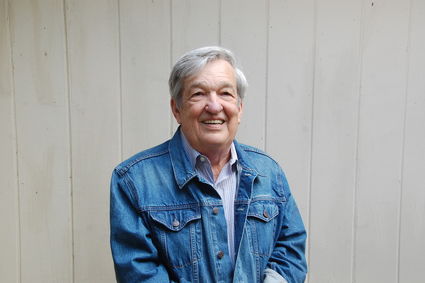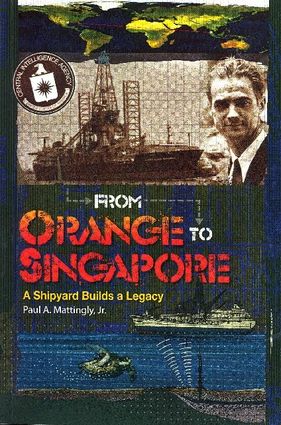Author recalls Orange shipbuilding boom
Last updated 5/30/2017 at Noon
Cutline:
Former Orange resident Paul A. Mattingly, Jr., will be signing his book, “From Orange to Singapore: A Shipyard Builds a Legacy” about the efforts of Orange’s Levingston Shipyard during and after World War II.
For the Record
Dave Rogers
Shipbuilding technology, off-shore drilling and ocean exploring.
Such were the bounties realized by the men who made Levingston Shipbuilding of Orange a world leader.
In “From Orange to Singapore: A Shipyard Builds a Legacy,” Paul A. Mattingly, Jr., chronicles the workers' level of excellence as they responded to American involvement in World War II and afterwards, to the transitioning into the postwar boom.
Entry is free and visitors are welcome to tour the recently restored 1902 depot that served Orange as a primary transportation hub for more than 70 years.
Mattingly should know Levingston.
The Houston resident practically grew up on the docks when he spent 12 early years in Orange as the son of the chief financial officer for Levingston Shipbuilding Co.
His family was here from 1940-54 as the company begun in 1930 by Capt. George Levingston was the U.S. Navy’s leading producer of ocean-going tugs. After the war, Levingston Shipbuilding was a leader in offshore drilling, eventually transitioning to a builder of jackup oil platforms.
In his book, Mattingly offers many interesting stores of a group of workers who, with their can-do spirit, forged the pioneering company. From the building of the Kennedy Class ferries for Staten Island, the New York Harbor tugboats for Moran Towing, the Glomar Challenger ocean research vessel, to the current connection to Keppel FELS (Far East Levingston Shipbuilding), the largest builder of jackup rigs in the world, Mattingly recounts the legacy of a little shipyard in Orange, Texas.
The author has always felt like a child of the Levingston Shipbuilding Co. culture and decided to document its history. From the days of World War II, the saga weaves a story from Orange to New York Harbor, to Venezuela, to Iran, to Singapore and involves tugboats, barges, ferries, and offshore equipment in the Gulf of Mexico. The linkage of Levingston with the world of earth science created a revolutionary shipbuilding project.
Mattingly returned to Houston in 1954 and earned a business degree from the University of Houston.
In 1975, he moved his family from Houston to the “Golden Triangle” where he took over the leadership of Marine and Petroleum Manufacturing Co., Inc. in Orange, a company his father had founded after leaving Levingston. The family resided in Beaumont, Texas, for the next 35 years. George Levingston’s father, Samuel H. Levingston, an immigrant from Northern Ireland, started building ships in Orange in 1859. He built paddle-wheel steamers for service on the Sabine River and converted river steamers to gunboats for the Confederate Navy.
Captain George helped Joe Weaver start and operate Weaver’s Shipbuilding in Orange from 1896 to 1914.
In 1945, George Levingston sold Levingston Shipbuilding to Edgar W. Brown Jr., a major figure in the lumber industry in East Texas.















Reader Comments(0)